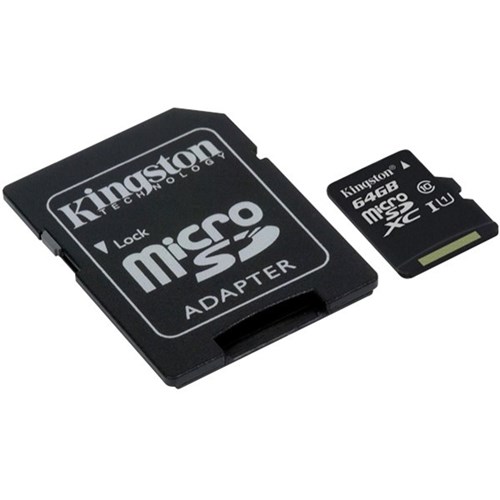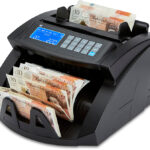
How to choose an SD card
For anyone new the planet of the hyper-mobile local hardware store, SD cards are a small card (or even technically cartridge format) device with metal contacts that transfer data at surprisingly fast rates, measured in megabytes per second or MB/s.
Starting out because of the future-forward storage method for cameras as far back because the early aughts, SD cards are now used for gaming consoles just like the Nintendo Switch and almost every Android phone on the earth — to not mention some streaming boxes and other entertainment devices.
By deciphering an SD card’s different features, you’ll find the proper SD card for your device, allowing maximum performance without overpaying for features you’ll never use.
How to choose from SD and microSD
SD cards largely are available two popular sizes, the normal SD and therefore the microSD. Which one you would like depends on your device. A majority of mirrorless cameras, DSLRs, and compact cameras use SD cards, while microSDs are utilized in action cameras, drone cameras, and smartphones.
Most microSD cards accompany an adapter — the microSD plugs into the adapter and may then be used with any standard SD card reader. While technically, you’ll use the adapter with a microSD during a camera that needs a full-sized SD, you almost certainly shouldn’t. The adapter can hamper the speed of the cardboard, and it also isn’t as well-built.
If you’re unsure if you would like an SD or a microSD, check the specifications for your device, or locate the SD card slot. A MicroSD card slot is going to be slightly smaller than your thumbnail, a standard SD a touch larger than a guide to the simplest SD cards and therefore the best microSD cards you’ll buy
What’s the difference between SDHC and SDXC? Choose an SD card capacity
An SD card is not any longer called just an SD — you’ll see SDHC, SDXC, or maybe SDUC. Those extra letters tacked on the top help categorize the memory card’s capacity. SDHC stands for top capacity and these cards are available sizes between 4GB and 32GB. SDXC stands for extended capacity and includes cards with enough space for between 64GB and 2TB of knowledge. SDUC holds between 2TB and 128TB of knowledge, which is why you do not see these cards around yet — that’s tons of knowledge.
Most modern cameras can use SD, SDHC, or SDXC interchangeably, but if you’ve got an older camera, which will not always be the case. Devices released after 2008 are typically compatible with SDHC, and most devices launched after 2010 will work with SDXC. the first SD card is compatible with any SD device.
So does one need a coffee capacity, plain old SD card, a mid-sized SDHC, or an SDXC? Most cameras and smartphones today use high megapixel counts and enormous files — a 2GB SD card would refill pretty fast. The smaller category remains OK for things like low-resolution kids cameras, except for the foremost part, the selection is between SDHC and SDXC.
A 32GB capacity is enough to carry around 2,000 16 megapixel images or simply under a half an hour of 4K video. That’s sufficient for hobbyist photography, and even higher megapixel cameras if you do not mind switching cards often. the upper capacity SDXC goes to be best for top resolution cameras, 4K video and stashing many smartphone data.
Some photographers like better to use smaller SD cards and alter them often, that way if a card is broken, all the photos aren’t lost. Others like better to put everything on one card, since carrying around multiple cards can increase the chances of misplacing one.
Our recommended high-capacity SD card for many people is Lexar’s 1TB Professional 633 UHS-I SDXC. With storage like a little portable disk drive, this card is right for those that shoot tons, also as for those that enjoy taking time-lapse photography, uncompressed RAW photos, and even 4K video (although we recommend a faster card for video work). This Lexar card is additionally one among the cheaper high-capacity SD cards you’ll find.
Lexar 1 TB Professional 633x UHS-I SDXC
$299.00 FROM AMAZON
Choose a speed
Choosing an SD card is about quite picking the right type and size — the incorrect card speed can slow your camera down, or cause you to overpay for speed you’ll never use. Each SD card features a read and writes speed within the specifications, but you’ll see how briskly a card is at a look by watching the SD card class.
SD card speeds are categorized in one of three ways: speed class, Ultra High Speed (UHS) class, and video speed class. The first, speed class, covers minimum write speeds of two MB/s to 10 MB/s — the category number corresponds to the minimum write speed. a category 10 is that the fastest for this designation, while a category 2 is that the lowest. This speed category is written on the front of the SD card — the symbol seems like the category number inside a C.
A UHS speed class categorizes even faster speeds. UHS speed class 1 features a minimum write speed of 10 MB/s, class three features a 30 MB/s minimum write speed. The UHS speed is designated by a logo that appears sort of a U with the category number inside it.
The newest speed class, video speed class, is written with a V symbol before the category number. during this category, the category number is adequate to the minimum write speed, so a V6 writes a minimum of 6 MB/s, a V90 a minimum of 90MB/s.
You may see another speed category when buying an SD card — the bus speed. While the speed class refers to the minimum speed a card offers, the bus speed indicates the utmost possible speed. Currently, most SD cards have either a UHS-I (up to 104 MB/s) or UHS-II (up to 312 MB/s) bus speed. Faster UHS-III (up to 624 MB/s) and SD Express (up to 985 MB/s) speeds are standardized but aren’t widely available yet.
The biggest difference is that the UHS-II card features the second row of metal pins at the rear. that permits for a faster reference to the camera, allowing those faster speeds. However, because the planning of the cardboard is slightly different, not all cameras are compatible with UHS-II. Check your camera’s tech specs to form sure it’s UHS-II compatible — entry-level cameras tend to not offer the compatibility. Some cameras with dual SD card slots are only compatible with UHS-II in one among the slots, not both. (If your camera is older than 2014, no got to check, since compatibility wasn’t available in consumer cameras until that year).
So which speed does one need? That depends on the camera or smartphone you’re using. For the 8K video, you will need a V60 or V90. The V60, V30, and UHS 3 are ideal for 4K also as shooting bursts of RAW images on high megapixel cameras. UHS 1, Class 10, and V10 is sweet for stills on most DSLRs and mirrorless cameras with megapixel counts within the 20s and 30s also as HD video. Class 2, Class 4, Class 6, and V6 are best reserved for low-resolution devices.
If you are looking for a microSD to expand your smartphone’s storage, you would like a card with that’s a minimum of a category 10, but preferably a UHS 1 or UHS 3. For running apps — and not just storing files — a UHS 3 card is best. Anything slower will reduce the performance of that app.
If top speed and performance are what you would like, our favorites are the Sony SF-G Tough UHS-II and Lexar Professional 1000x UHS-II.
Sony SF-G Tough UHS-II SDHC
$59.99 FROM AMAZON
Lexar Professional 1000x UHS-II SDHC
$15.79 FROM AMAZON
What about brand and build?
How to choose SD card 2
Lisa Fotios/Business Insider
Chances are, there’s quite one brand of memory card that gives the sort, capacity, and speed that you simply need. So how does one decide which brand to use?
First, avoid purchasing a budget no-name SD cards — these sorts of cards can increase the chances of losing data to a corrupted card, which turns those few extra bucks saved into an entire lot of money dumped into data recovery. persist with the highest brands like SanDisk and Lexar. Brands that make other tech products, like Sony and Samsung, are a secure bet too.
Besides speed and capacity, as you compare brands, consider the card’s durability. Some SD cards are waterproof and dustproof, others make no such claims. If you never plan on taking the microSD out of your smartphone, you almost certainly don’t need the costlier cards designed to face up to the zombie apocalypse. If you’re shooting with a water-proof camera, are accident-prone, or are simply shooting images that require the foremost protection possible, opting with a more durable card may be a good idea.
Choosing one among the simplest memory cards will get you high-performance storage — but counting on the sort of device you’re using, you’ll be paying extra for features that you’re going to never use. Understanding the way to choose an SD card means you’ll pick the proper memory card for your device whenever.
The Sony SF-G-Touch UHS-II isn’t only fast, but it’s waterproof and mud proof, making it the simplest rugged SD cards we’ve used. SanDisk’s Extreme Pro cards also are very durable.


















